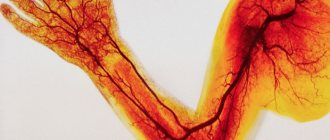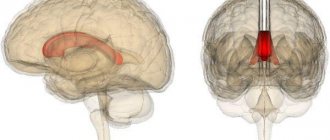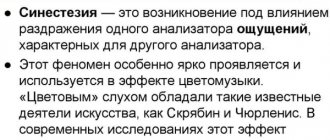What is dyslexia and why does it occur?
In order to meaningfully read a text, the human brain coordinates visual and auditory perception, the movement of the speech organs, memory data, and understanding of meanings. Normally, these processes occur at high speed.
In dyslexia, coordination is impaired. A person is unable to read quickly and without errors, understand the meaning while reading, remember what has been learned, or consolidate patterns.
For genetic reasons, a person with this disorder has less developed parts of the brain that are responsible for the process of correlating written and spoken words, as well as the written word and its meaning. The hemispheres of the brain with this pathology are less coordinated.
Reading disorders can result from brain damage, for example due to oxygen deprivation of the fetus. Unfavorable environmental factors also contribute to it, including too hasty learning to read.
Dyslexia in adults persists to varying degrees even after correction.
Reading disorders
Reading impairments in adulthood can develop through several mechanisms: reading impairments due to difficulties in mastering reading skills in childhood (dyslexia); reading impairment due to damage to the cerebral cortex in adulthood (Alexia); reading disorders that are part of a more extensive speech disorder (aphasia).
Dyslexia
Dyslexia is a consequence of the peculiarities of the formation of higher mental functions in childhood. As a rule, difficulties in mastering reading in children arise due to delays in psycho-speech development (ZRD, DPR, OSD), but there is also evidence that difficulties in mastering reading can arise as a result of retraining “left-handers” to “right-handers.” Most often, by adulthood, the reading problem can be solved through classes with speech therapists, speech therapists and teachers, but there are known cases of dyslexia in adulthood, including among successful famous people (Tom Cruise, Marilyn Monroe).
Alexia
Alexia is a violation of an already formed reading skill, which can have various manifestations: the inability to “recognize” letters, difficulty composing words from letters, difficulty understanding the meaning of what is read. Symptoms of alexia depend on which part of the cerebral cortex is damaged due to a stroke or traumatic brain injury and which higher mental function (spatial function, auditory-verbal memory, visual perception) is the basis of the reading disorder. Alexia is often combined with speech disorders (aphasia) and writing disorders (agraphia). The diagnosis of alexia is rarely self-diagnosed. As a separate diagnosis, “Alexia” is given to patients whose reading impairment is not associated with a speech impairment (aphasia) or is much more pronounced than aphasia (mild degree of aphasia with severe reading impairment).
Reading impairments observed in severe speech disorders (aphasia) correspond in their mechanism to the main speech diagnosis (motor, sensory, amnestic, dynamic, acoustic-mnestic, semantic aphasia). Reading capabilities in such cases, as a rule, correspond to oral speech capabilities.
Treatment
Overcoming reading disorders in adulthood is a complex interdisciplinary task that lies in the field of activity of such specialists as: neurologist, speech therapist and neuropsychologist. Based on anamnesis and observation, using neuroimaging data (CT, MRI) and functional diagnostic methods (EEG, ultrasound), a neurologist determines the peculiarities of the functioning of the patient’s nervous system. If necessary, the neurologist prescribes drug treatment, refers the patient to consultations with specialists in related fields (ophthalmologist, psychiatrist, therapist), prescribes physiotherapeutic procedures, massage, and osteopathic treatment. A speech therapist and a neuropsychologist determine the quality and degree of reading impairment, based on data from complex neuropsychological and speech therapy diagnostics, they draw up a developmental training program, and conduct correctional and rehabilitation classes.
Classification of dyslexia
Types of dyslexia are related to the structure of human speech.
A word has elements and functions, and the ability to use them constitutes a language skill:
- the sounds of a word and their combinations (syllables) correspond to the ability to distinguish these elements by ear and repeat them in the same way with your speech organs;
- written signs of sounds (letters) correspond to the ability to correlate visible letters with audible sounds, transform graphemes into phonemes (read) and vice versa (write);
- the meaning of words indicating objects of the world, their actions and states, corresponds to images in the mind;
- The connection of syllables and words (grammar and syntax) corresponds to the ability to combine them according to the relationships in sentences and an understanding of the functions of connecting elements (prefixes, endings).
Disturbances in the processes of reading letters, syllables and words correspond to different types of disorders.
Phonemic
Difficulty turning visible letters into spoken sounds is phonemic dyslexia.
Phonemes are the sound elements of language. During training, the child masters their recognition by ear and the ability to accurately reproduce them using the speech organs. In writing, phonemes correspond to graphemes, i.e., written characters, so dyslexia is often accompanied by dysgraphia.
Reading ability involves the ability to pronounce phonemes quickly, clearly and correctly according to graphemes (sounds corresponding to visible letters).
Healthy adults are familiar with the experience of natural, temporary phonemic dyslexia that occurs when learning an unfamiliar language. At first, alien sounds are not distinguishable by ear. For example, Italians, when learning Russian, do not perceive the difference between “sch” and “ch” by ear. But even with auditory discrimination, a person cannot always pronounce the desired sound.
If a child has a reading disorder, this skill is given with difficulty or is no longer given in the native language.
Semantic
Difficulty perceiving the meaning of a word when reading is a semantic form of the disorder. With semantic dyslexia, a person does not understand the meaning of what they read. This type of dyslexia manifests itself as a person’s use of words that do not have the correct meaning and slow growth of vocabulary.
Ungrammatical
The problem with combining word elements characterizes the agrammatic form of the disorder.
With this type of dyslexia, it is difficult for a person to assimilate, generalize and remember connections between parts of a sentence, and correctly form phrases and particles.
Agrammatisms (“beautiful girl”, “riding a horse”) appear in both oral and written speech. In their natural form, they are also familiar to an adult from studying a foreign language and the speech of a foreigner. They look like inappropriate use of prepositions and endings, confusion with numbers and cases, and word order in a sentence.
Symptoms of dyslexia in children
Many parents ask the question: “Dyslexia – what kind of disease is it?”
I hasten to assure you that dyslexia in no way means any deviations in the mental development of the child. On the contrary, the peculiarities of perception and thinking often give rise to pronounced talents, for example, in drawing, handicrafts, dancing or any other type of creativity. The term “dyslexia” literally means “speech impairment”. The causes of dyslexia can be different, but it is believed that it is often associated with heredity, as a result of which the child is found to be incapable of learning to read and write. He may confuse letters, change their places, read syllables or letters, not understand the meaning of words and write them incorrectly. At the same time, standard training schemes - constant repetition and memorization - do not work.
Davis's method for correcting dyslexia in children and adults is based on the use of a number of tools that are designed to develop self-control, as well as on performing special exercises. I practice this unique and effective method, having received a certificate from DDAI - the International Davis Association (USA, www.dyslexia.com) and am a member of the DLF - British Davis Association (www.davislearningfoundation.org.uk)
The goal of this technique for eliminating dyslexia is not only for the dyslexic to master a tool for independent control of his condition, but also for the subsequent consolidation of this skill.
You can independently determine that your child has dyslexia by taking a test.
Signs and characteristics of dyslexia
- misses letters or words when reading
- swaps or confuses letters
- Changes the sequence of words in a sentence
- skips a line when reading
- guesses the word from the first letters, thinks out the endings
- stutters or stops
- speeds up or slows down when reading
- ignores punctuation
- frowns or appears distracted
- fiddling with the corner of the page
- tries too hard, concentrates while reading
- changes in voice
- the gaze becomes hazy or wandering
- turns red or pale
- shakes or swings his leg
Classification and main forms of dyslexia
It must be borne in mind that a child can express one characteristic of dyslexia, or several at the same time. It will also be useful to know that in Russia there is a classification of dyslexia. You may have to face the fact that defectologists distinguish the following types of dyslexia: semantic, optical, mnestic, phonemic, agrammatic.
In any case, the uniqueness and effectiveness of the course using the R. Davis method is that it allows you to correct ANY type of dyslexia, at any age, in 5 days!
Diagnosis of dyslexia
To make a diagnosis, it is necessary that the disorders have been observed since childhood and arise against the background of normal intellectual development in other areas.
The disorder is not detected until learning to read begins. In this case, signs of dyslexia arise:
- The child does not remember letters and lags behind in mastering the alphabet.
- Reading for a long time is limited to the pronunciation of letters in turn, problems with the transition to reading syllables.
- When pronouncing sounds and syllables, the child confuses them, so that repeated errors, inaccuracies, and replacement of one with another occur.
- The child puts words in sentences into inappropriate forms (inaccurately inserts endings and prefixes) and does not correct himself.
The disorder is often accompanied by other personality traits. The most common diagnoses are attention deficit hyperactivity disorder, when a child cannot sit still and maintain attention in one activity, and emotional instability, in which the child suffers from unmotivated mood swings.
Signs
Phonemic dyslexia is characterized by difficulty learning to read. Children cannot do this for 2-4 years. They have a hard time mastering letters and cannot combine them into syllables or words.
With this disorder, some children easily remember individual letters, but make mistakes during the reading process. They do not distinguish the letter as a grapheme.
Khvattsev believed that the basis of the problem was a violation of phonemic hearing. At preschool age, the child has not mastered the sound system; he does not distinguish sounds that are similar in sound ([S]-[C], [Sh]-[Zh]). An example of distorted perception: “dragged - dragged”, “egg - yaso”.
There is another form of phonemic dyslexia. With it, the student begins to read letter by letter and changes the structure of words. When consonants overlap, letters are skipped, a vowel is inserted between two consonants, syllables are rearranged and skipped.
Psychological symptoms are identified. Children have difficulties with spatial orientation; shapes and sizes are not accurately determined.
The correct development of spatial representations (right-left, top-bottom) is the basis for the acquisition of letters. To do this, they learn to navigate within the body (objects on the left or right), then move on to counting from the object (to the left of the cube lies...?). The third stage is the most difficult - orientation in three-dimensional space.
Only after this do they move on to spatial representations on paper. A preschooler should be able to determine the top of a page, the bottom, and find a line. Without these skills it is impossible to teach him to write.
Dyslexia correction
Dyslexia is treated by a speech therapist.
For young children, game tasks based on drawings and cut-out pictures are used to train letter recognition. These exercises are also integrated into the study of other subjects. Singing syllables is used, since it is difficult for children with dyslexia to exhale for a long time while simultaneously pronouncing a sound. The following tasks are used: “find a letter”, “finish a word”, “put letters together” from cubes, “recognize letters after crossing them out”, “recognize a letter in the mirror”.
For older children, corrective exercises are similar to the usual tasks in the Russian language. The differences lie in the number, duration, detail and intensity of tasks. A child may need to repeat the difference between the prefix “in” and “on” about 1000 times with examples before this material sticks.
Learning foreign languages is considered an effective method. The English language is phonemically more difficult than Russian, and working with reading English words makes it easier to master your native language.
In Russia, one of the accepted methods for treating dyslexia is the system of A. N. Kornev.
People who cannot be taught to read...
Author Yana Filimonova
Updated: 01/10/2020 10:55 Published: 04/18/2012 11:00
Science » Ecology » Man
“A specific disorder of the reading process, caused by the immaturity of certain mental functions,” is the definition of dyslexia that experts have so far given. Based on the results of a recent experiment, Italian psychologists concluded: dyslexia begins long before learning to read, and its true roots are in impaired concentration.
7 shared
People who cannot be taught to read...
Dyslexia as a separate disease received attention in the late 60s of the last century. Children suffering from this disorder could be smart and capable, with a good memory. Their difficulties began in the process of learning to read and write. Some people learn to read quickly, some more slowly, some children seem to grow up literate from birth, while others write with errors until old age. But the majority of even semi-literate people make logical mistakes: they skip “silent” letters, write a word the way it is heard, and the like.










